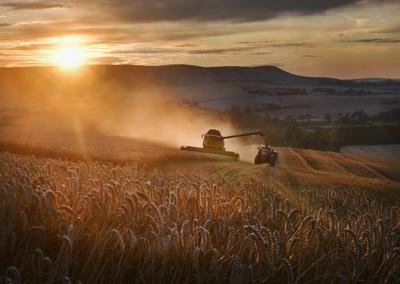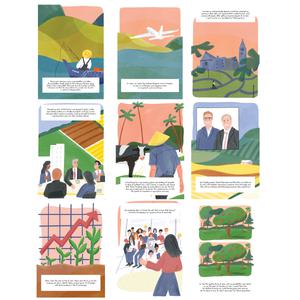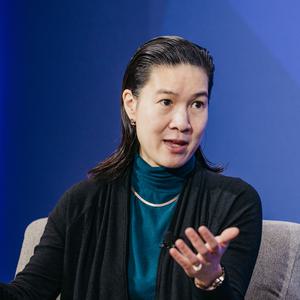On June 29, 2022, Indigo Ag completed its first crop of agricultural carbon credits, representing a significant milestone in sustainable agriculture and climate mitigation. This is the first time such nature-based, high-quality carbon credits will be issued at scale — a culmination of years of collaboration between farmers, businesses, and the scientific community. We spoke to Indigo Ag’s Founding Chairman and Flagship Pioneering Executive Partner Robert Berendes to understand this historic moment for farming and the planet.
What led to this milestone announcement?
A few years ago, the Indigo team saw an opportunity to help farmers systematically take carbon dioxide out of the atmosphere and put it into the soil as carbon by leveraging photosynthesis and specific regenerative agricultural practices. Moreover, Indigo saw a way for farmers to get compensated for this work by leveraging powerful modeling alongside direct soil testing to accurately quantify the amount of carbon dioxide they remove from the atmosphere at scale. This carbon removal project approach or methodology is overseen by registries like the Climate Action Reserve and Verra that certify that the grower’s farming practices made a change in the amount of carbon in the soil, and ultimately issue carbon credits, attaching value to the carbon farmers sequestered.
How does this moment represent a leap forward for climate mitigation and sustainable agriculture?
We now have scientific, technical, and procedural proof that, through changing practices, farmers can fundamentally and quantifiably put carbon into the soil at scale. This announcement represents nearly 19,000 tonnes of carbon that has been removed from the atmosphere using natural processes (i.e., photosynthesis). At the same time, it represents a totally new revenue stream for farmers, but this is only the beginning. Now, we are going to look to scale this up to the billions of acres of farmland that could be used for sequestration, which has the potential to capture billions of metric tons of carbon dioxide every year. This could make a big impact on efforts to achieve global climate goals, as recently highlighted in the Intergovernmental Panel on Climate Change (IPCC) report, which stated we need to reduce annual carbon dioxide emissions by 14 billion tonnes by 2030.
Agricultural soils as a storage solution and photosynthesis as a carbon technology are the most scalable, most immediate, and actually largest opportunity we have to achieve this goal. To accelerate scaling, carbon credits encourage farmers to adopt regenerative agriculture practices that increase soil fertility, productivity, and water storage capacity, as well as produce more nutritious crops. This is a unique moment where sustainable agriculture meets climate change reversal, and ultimately leads to farmers making more money, farmland becoming more valuable, consumers eating more nutritious food, and the planet becoming a better place for all of us.
How are high-quality agricultural carbon credits generated?
The first step in generating a carbon credit is to measure the carbon in the soil before a farmer makes a change to their growing practices, called the baseline. These values are determined via sophisticated biogeochemical models that simulate the soil environment, including its chemistry, geology, climate, and biological properties (e.g., microbiome), in combination with selected sampling to validate the model results. Farmers typically change one or two practices at a time, for example, growing a cover crop, rotating between different crops, or decreasing or eliminating tilling. About a year after the practice has been in place, the carbon in the soil can be determined again and compared to the baseline value. These data then go through a rigorous validation and quality-assurance process that is essentially three stages: Indigo conducts its own quality assurance as the data is collected, and then that data is sent to the registries who check the data and have a separate auditor validate the data, too. Once that process is complete, the amount of carbon dioxide sequestered in the soil on a per acre basis has been determined and validated, and every metric ton of carbon dioxide is equivalent to a credit. That credit can be purchased by an organization looking to offset emissions.
The unique properties of the credits Indigo generates are that they are high quality, nature based, and superbly validated. The quality of the credits is associated with the overall methodology for determining the carbon sequestered per acre, quality assurance of the date collection, precision of the model, and validation of the entire process. High-quality credits are additional, meaning the practice captured more carbon in the soil than the traditional practice, and permanent for 100 years, so buyers can be assured of the reality and validity of the amount of carbon they are offsetting.






